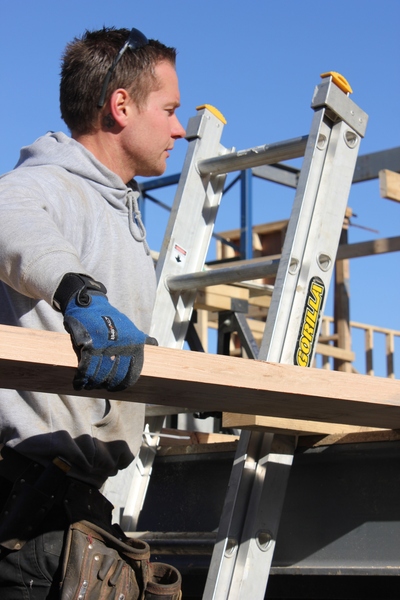Can we equalise safety in residential construction?
Thursday, 24 October, 2013
We often take them for granted, but our hands are essential to earning a living - particularly if you are among the 9% of Australians working in the construction industry.
According to Worksafe Victoria, more than 20% of injuries incurred by carpenters are hand and finger related, with similar statistics for concreters, electricians, labourers, plasterers, plumbers and roofing professionals.
Wearing gloves is the simplest, most cost-effective way to increase productivity and protect your future - and adequate PPE is compulsory on all large-scale construction sites. So why is it that many smaller residential builders and tradies still choose to work without suitable hand protection?
Now, with the WHS Act of 2012 nationalising workplace health and safety laws and making it easier for cross-state companies to comply, the Safework Australia Construction Work Code of Practice requires all workers at the site to be issued with safety gloves. Leading by example, large firms implement Safe Work Method Statements (SWMS), occupational health and safety (OHS) inspections, and are increasingly promoting a positive safety culture.
Learning from the major players, many small to medium-sized builders are now including safety gloves in their PPE policy, too. One Melbourne builder, Streaky, did precisely that and saw a 75% reduction in workplace abrasions as a result - going from one per week down to less than one per month.
Streaky’s managing director, Clint Ebeyer, credits this improvement with the introduction of HyFlex 11-840 gloves across all the company’s work sites.

“Going to a higher quality, general-purpose glove has delivered surprising benefits,” Ebeyer explains.
“Apart from being more comfortable, even in the heat of summer, the glove lasts for several days compared with the previous product we were using, which had to be discarded daily. That’s a huge cost saving as well as a safety improvement.”
Although some builders worry about safety gloves inhibiting workers from doing their job, Streaky team member James Stednik says, “ActivArmr 97-003 Heavy Labourer gloves are great for preventing cuts and abrasions when we’re moving concrete blocks and debris. The fingertips are gentle so you can still get a feel for all the fiddly bits and pieces on site.”

NSW veteran carpenter and joiner Bruce Tubnor is another sole trader who’s taking safety seriously. “In the past, we just didn’t bother with gloves,” he explains. “I’ve had injuries which put me out for a few weeks simply because I didn’t care to put a pair of gloves on. Now I wear my gloves every day.
“I use the HyFlex 11-840 for all sorts of jobs - painting, concreting, finishing concrete, architraves,” Tubnor explains. “I wanted gloves that are comfortable but still let me feel everything. With these gloves I can even get nails out of my nail bag.”
To avoid injury and downtime, premium hand protection is imperative on any construction site - whether it’s a multimillion-dollar commercial build or a home renovation. A cultural shift still seems necessary before adequate protection is not the exception but the rule on smaller scale projects.
Smoke complexity, skin absorption and protective equipment in firefighter safety
To address health and safety questions raised by Australian firefighters, researchers have...
Will silicosis compensation costs rise despite Victoria's engineered stone ban?
Monash University researchers have explored whether silicosis compensation costs are set to...
Army aims to combat heat risk with wearable monitor prototype
A wearable heat risk monitor prototype for the Australian Defence Force is being trialled by Army...








